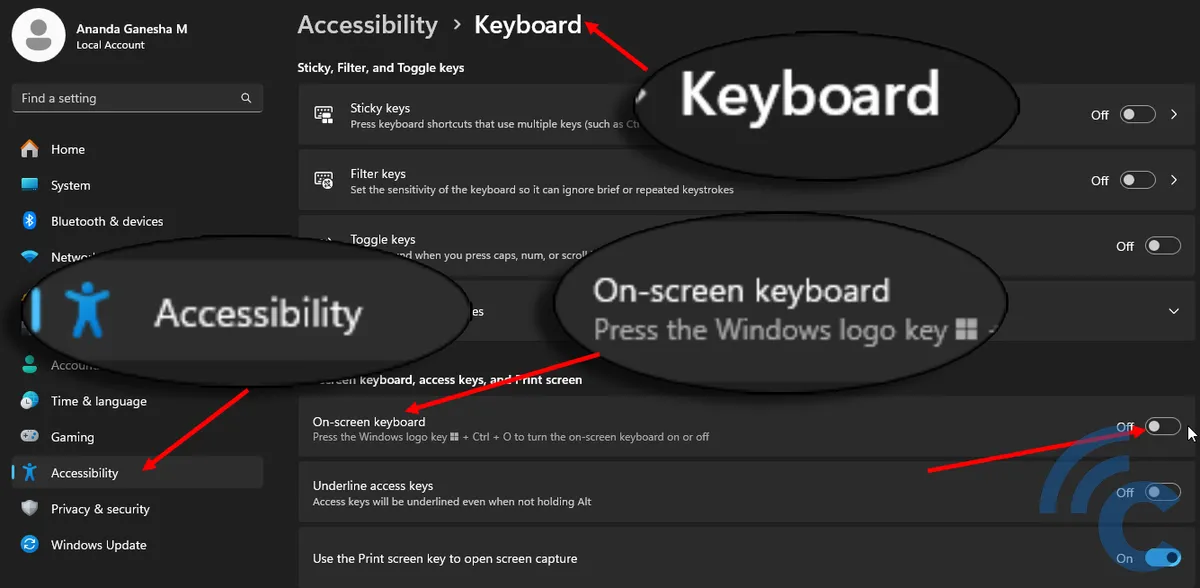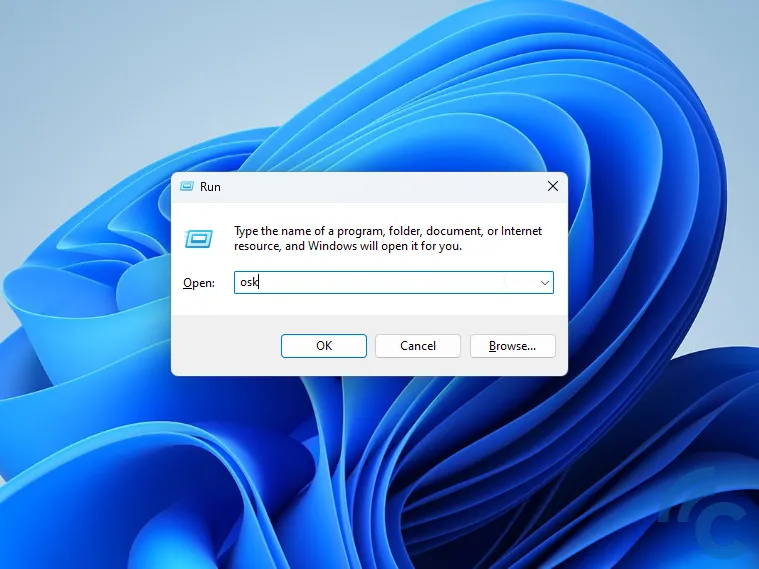6 Easy Ways to Enable On-Screen Keyboard on Laptops
Virtual keyboards are an integral component of modern touchscreen devices like smartphones and tablets. Hybrid laptops, which blend the functionalities of both laptops and tablets, also necessitate a virtual keyboard, especially when used in tablet mode.
Generally, a virtual keyboard is software-based, enabling users to type characters without a physical keyboard. This digital keyboard is often a built-in feature of the device's operating system, though users have the option to install third-party virtual keyboard applications as well.

But what about those using non-touchscreen computers or laptops? Can they use a virtual keyboard? Absolutely! In fact, most operating systems, including Windows, come with their own version of a virtual keyboard.
In Windows, it’s known as the On-Screen Keyboard. This feature is particularly crucial for regular computer users as it serves as a valuable alternative in case of physical keyboard malfunctions or damage.
However, on non-touchscreen devices, using the On-Screen Keyboard requires a mouse to click each key, which might be slightly inconvenient but can be a lifesaver in emergency situations.
So, how do you activate the On-Screen Keyboard? In this article, Carisinyal will guide you through several easy methods to enable the virtual keyboard. Let’s explore them!
1. Through Settings

First, you can activate the On-Screen Keyboard through the computer's settings menu. With just a couple of simple steps, the virtual keyboard will be ready to use. Here's how:
- Move your cursor to the bottom left of the screen and click the Windows icon to open the Start Menu.
- Navigate your pointer to the top and select
Settings > Accessibility > Keyboard. - In the Keyboard settings, you will find the option for the On-Screen Keyboard. Toggle the switch from 'Off' to 'On' to enable it.
- Once these steps are completed, the On-Screen Keyboard will be activated and ready for use.
2. Through Control Panel

The second method is similar to the first but takes a slightly different approach. This time, the On-Screen Keyboard is activated through the Ease of Access Center in the Control Panel. Follow these quick steps to enable it:
- Click on the search field and type Control Panel, then click Open.
- Select Ease of Access and then choose Ease of Access Center.
- Look for the Start On-Screen Keyboard option in the quick access tools box and click it.
- Wait for a few moments, and the On-Screen Keyboard will appear on your screen.
- Once these steps are completed, the virtual keyboard is ready for use.
3. Through the Search Panel

Windows 10 features a dedicated search panel located on the left side of the taskbar. You can use this search panel to access the On-Screen Keyboard feature. Here is how to do it:
- Click on the search icon (magnifying glass) on the taskbar.
- Type the words "On-Screen Keyboard".
- There's no need to press 'Enter', as the system will automatically display related search results.
- Once the results appear, you can activate the On-Screen Keyboard directly from there.
Additionally, you have the option to use voice commands to activate the On-Screen Keyboard, but this requires the Cortana feature to be activated beforehand.
4. Through Windows Run

Using the Windows Run function is one of the quickest ways to activate the On-Screen Keyboard in Windows 10. Here's how to do it:
- Press the
Windows+Rkeys simultaneously on your keyboard. This will open the Run dialog box. - In the Run box, type "osk" (without quotes) and then press
OKorEnter. - Wait a brief moment, and the On-Screen Keyboard will appear on your screen.
5. Through Windows PowerShell

Another way to enable the On-Screen Keyboard is by using the Command Prompt. Follow these simple steps to get started:
- Press
Windows+Xon your keyboard to open the quick access menu. - From the menu that appears, select 'Terminal (Admin)'.
- In the PowerShell window, type the command "osk" and press
Enter. - The On-Screen Keyboard will then appear on your screen after a few moments.
6. Using the Free Virtual Keyboard App

In addition to the built-in virtual keyboard, Windows users can opt for third-party virtual keyboard applications. These applications vary, offering both free and paid versions, with the paid ones typically providing more advanced features.
One notable free virtual keyboard application for Windows is Free Virtual Keyboard. This application is not only free but also lightweight, multilingual, and designed to be finger-friendly.
It is versatile and provides user-friendly typing experience for users of Windows-based touchscreen computers. It's not just limited to touchscreens though; you can also interact with it using a mouse, pen, or other pointing devices. Its design, featuring large keys, makes it particularly convenient for fingertip typing.
This free virtual keyboard application offers four different virtual keyboard options and supports all languages and keyboard layouts installed on your system. Some of the key features of Free Virtual Keyboard include:
1. Customizable Size, Color, and Transparency
Users have the flexibility to modify the size, color, and transparency of the keyboard to fit their specific needs and preferences. In full-screen mode, the virtual keyboard is designed to automatically resize to match the screen's width. This feature ensures that the keyboard is functional and visually coherent in both landscape and portrait orientations.
2. Auto-Repeat Function
The Free Virtual Keyboard includes an auto-repeat feature, which is extremely useful for continuous typing of the same character. When you press and hold any key, it automatically repeats that character, simplifying tasks like long spaces or repeating characters.
3. Portability and Flash Drive Compatibility
One of the standout features of Free Virtual Keyboard is its portability. The application can be stored on a USB thumb drive and run directly from it, making it convenient for those who use multiple computers or need a virtual keyboard on the go.
The settings for the application are stored in the FreeVK.ini file, which is located in the program's installation folder. In cases where this isn't feasible, the settings are stored in the computer's registry.
If you're interested in trying out this free virtual keyboard, you can download it directly from the application's official website (click here) or from the Microsoft App Store (click here).
Those are some simple ways to display a keyboard on your laptop screen. In addition to the built-in virtual keyboard and the Free Virtual Keyboard application, you can also explore other similar software available in the Microsoft App Store.
